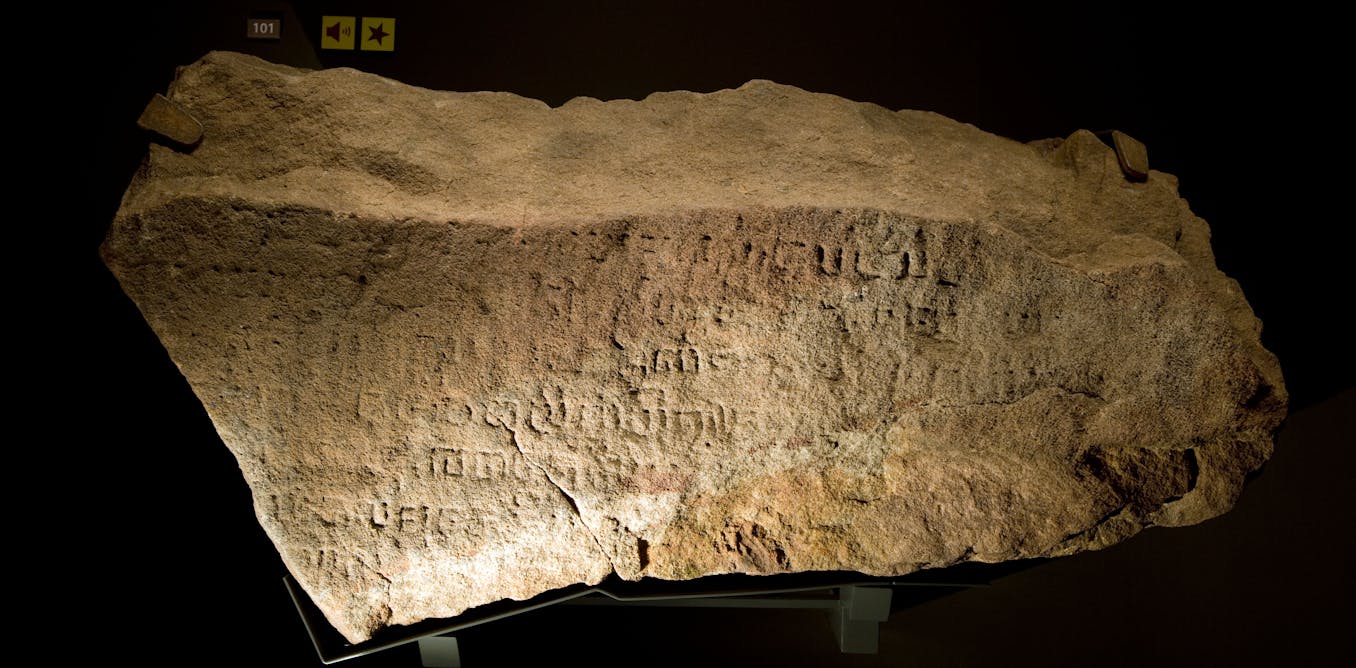If you pay a visit to the Singapore Stone, displayed at the National Museum of Singapore, you might be disappointed. That’s because the inscription—carrying an unknown writing system transcribing an unknown language—is fading. But if you love puzzles, this won’t put you off.
The stone is a fragment of a bigger slab, once welcoming visitors at the mouth of the Singapore River. The British blew it up in 1843, to build a fort. Discovered in 1819, the stone was almost entirely lost.
Scottish military officer Lieutenant-Colonel James Low, amid general indifference, was able to save three fragments. He sent them to the Royal Asiatic Society’s Museum in Calcutta to be studied.
Despite its name, this sandstone slab is not a simple “stone.” It was once part of a monument, an ancient epigraph measuring three-by-three meters and carrying about 50 lines of text.
Not being able to understand the text of the epigraph, we cannot postulate a specific time frame for its origin. Hypotheses range from the 10th to the 13th century, but there is no consensus. Was the epigraph connected with the Majapahit empire? Or a gift by a rajah from south-eastern India, celebrating the deeds of the local legendary hero Badang? No one will know until we’re able to read it.
The script is one of the major puzzles in language deciphering of our times. It’s a conundrum in crypto and historical linguistics with apparently no solution. The challenge can be compared to the mysteries of better-known undeciphered writing systems, like Linear A and the Rongorongo script.


